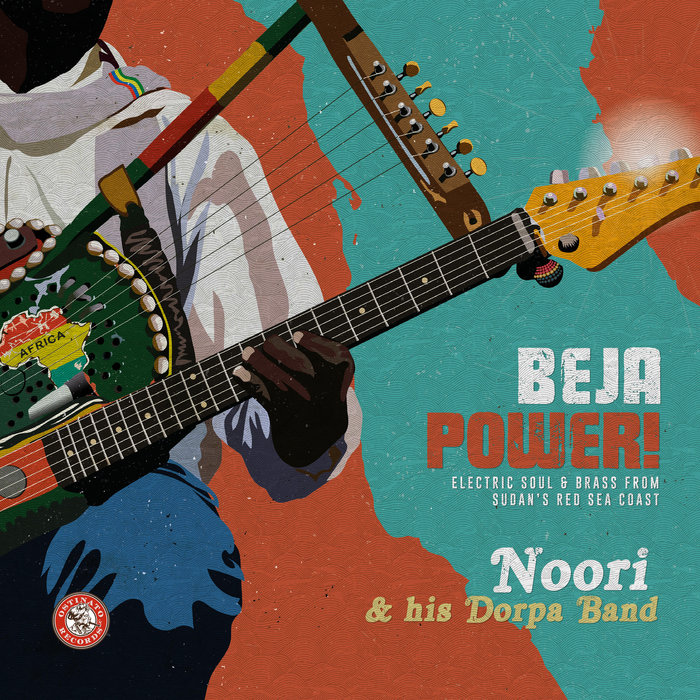
Beja Power! Electric Soul & Brass from Sudan’s Red Sea Coast – Ostinato Records
this blog is GROOVY – check out great Soul, Funk, Jazz, Hip Hop, Bass, Breaks , Reggae, House n many more TUNES
Sudan, the largest country in Africa, is not only known for its rich history and vibrant culture but also for the groovy beats that pulse through its music scene. Let’s take a funky trip down memory lane and explore the evolution of Sudanese music, sprinkled with some fun facts about its colorful musicians.
Sudanese music is an eclectic mix that reflects the diverse ethnic groups across the nation. From Nubian rhythms to Arab influences and traditional African sounds, it’s like a buffet where every dish tells a story! Traditional instruments such as the oud (a string instrument) and various percussion pieces like drums set the stage for lively gatherings.
The roots of modern Sudanese music trace back centuries. In ancient times, tribes would gather to share stories through songs—songs that echoed tales of love, war, and daily life. Fast forward to the 20th century; with globalization slowly seeping in post-colonialism, Western styles began blending into local traditions.
One major wave occurred during the 1940s when musicians started incorporating jazz elements into their melodies. This fusion led to genres like shaabi (popular music) gaining traction among youth—a true testament to how creativity can build bridges!
Now let’s talk about some legendary musicians who shaped this musical landscape:
Often dubbed as the “Mister Voice,” Wardi was beloved both at home and abroad. He had a unique ability to blend romantic lyrics with social commentary while still keeping people on their feet dancing away!
Funny Fact: Wardi once performed so many shows in one week that he jokingly compared himself to “a chicken on too many stoves”—cooking up hits everywhere he went!
Known as “The King of Sudanese Jazz,” Kuban brought a fresh sound by mixing traditional rhythms with jazz improvisation—talk about shaking things up! His saxophones sang out sweet tunes against earthy beats.
Funny Observation: It’s said Kuban played his saxophone so passionately that people often mistook him for an actual cow mooing when hitting those high notes!
This guy’s got moves! El Din blends classic Sudanese folk style with pop influences seamlessly—his concerts are often filled with dance-offs between fans which makes every show feel more like a party than just another gig.
Quirky Tale: Legend has it his guitar was once stolen by an overzealous fan wanting a piece of magic—but they returned it after realizing they could barely strum two chords!
As time rolls on, new artists continue making their mark while staying true to cultural roots:
Shadia Mansour, known as “the first lady of Arabic rap,” rocked arenas worldwide by channeling her Palestinian heritage through gripping verses.
Mashrou’ Leila, although Lebanese at heart, has captivated audiences universally—including Sudani crowds—with upbeat tracks promoting inclusivity—proof that borders don’t define talent!
These rising stars remind us how global trends reshape local sounds while keeping authenticity alive—a beautiful paradox indeed!
Dancing is integral in Sudanese celebrations from weddings to festivals; you’ll find everyone busting out killer moves fueled by infectious rhythms! One such dance is the sayyid, where participants engage in intricate footwork simulating camel movements—not your average TikTok trend these days!
Fun fact: There exists something called “The Chicken Dance” based on this tradition where participants flap their arms wildly – we bet even poultry would join if given half a chance!
Sudan hosts several dynamic festivals showcasing its musical spirit—from sprawling street performances during Eid celebrations to intimate jam sessions at local cafes buzzing with life each night.
One notable festival occurs annually near archaeological sites where excavated treasures meet musical gems under starry skies—it doesn’t get cooler than serenading historical ruins whilst celebrating today’s art forms!
During these festivals or casual hangouts over coffee stirred rhythmically amid laughter-filled conversations happens spontaneous jam sessions—the ultimate way artists collaborate without script or plan… just pure creative flow joined together harmoniously like dancers lost within each other’s embrace.
In essence,Sudanese music encapsulates resilience,growth,and rich storytelling passed along generations.It thrives amidst struggles,yet still rises effortlessly creating joy wherever played.Music remains universal,a language transcending barriers—and no matter what genre resonates deep within you,the rhythms will always bring communities closer together!
So next time you hear those grooves wafting through any corner,envision yourself joining those spirited gatherings echoing tales wrapped around melodies breathing life onto stories,witnessing history unfold right before our ears.Because ultimately? It all comes down dancing,singing and being part something bigger – now isn’t THAT worth making noise about?
Feel free to clap your hands or stomp your feet because if there’s anything we learned from Sudani vibes today—it’s definitely keepin’ it real,funky AND fun along way baby!!

Beja Power! Electric Soul & Brass from Sudan’s Red Sea Coast – Ostinato Records